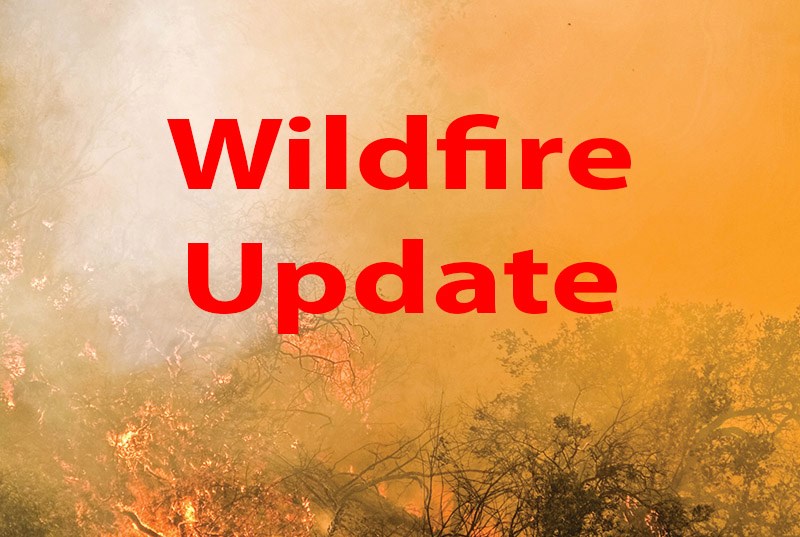Hot and dry weather is an issue as the province continues to battle a growing number of wildfires in northern Saskatchewan.
At a conference call of reporters Wednesday morning, Steve Roberts, vice-president of operations for the Saskatchewan Public Safety Agency, reported that hot and dry conditions were expected to continue over the coming days, with isolated storm systems expected to pass through.
The storms over the last number of days are producing slight amounts of precipitation and also new lightning strikes, giving new fire starts. As a result the provincial fire ban remains in effect, likely for the next three to five days. Roberts said they do not expect a reprieve from the hot weather conditions within the next three to five days.
As of Wednesday morning, there were 122 active fires in the province, for a total of 354 fires this year. That is 146 above their five-year average.
A number of fires were of concern including the Lock fire in the northwest impacting the Dillon, Michel Village and St. George’s Hill communities.
Roberts said there is ongoing work with heavy equipment, aircraft and ground crews to secure those communities from the fire threat.
Other fires of note include the GMB01 fire in the vicinity of Grandmother’s Bay. Roberts said it is also seeing activity from ground crews and helicopters. The Mule and Lynx fires in the vicinity of Stanley Mission are being “actively engaged to prevent the threat to the town,” said Roberts.
Also ongoing is the Stallard fire between Black Lake and Stony Rapids, but Roberts reported there has been some precipitation and the risk is dropping for that fire.
Two other fires include the Rabbit fire, which poses a threat to Highway 2 North south of La Ronge, and also the Harding fire which poses a risk to Highway 106 due to smoke.
For specific traffic closures, travellers are urged to use the Highway Hotline.
In one significant change from Monday’s update, Roberts confirmed they are reaching out to local, provincial and some of their national partners to “look at the potential of what resources may be available to add to our government fire crews and community fire crews which are fully engaged at this time in our province.”
Robert told reporters they have engaged with local communities and tribal councils to bring in those trained in firefighting as casual hires to add that personnel to the fire response. He said many northern communities have individuals with firefighting experience that they can use. They are also looking at ways they can use firefighting staff from fire departments in the province for community protection.
Roberts reported crews have been working “extremely hard over the last two or three weeks.” The issue has been about giving them an opportunity to come off the fire line and get refreshed, and then have them redeployed. If they can backfill with local firefighters, “that will allow us to get action on more of the other fires that are occurring including new starts.”
A total of 48 people impacted by the Lock fire near Dillon have been evacuated to North Battleford as of Wednesday.
An additional 17 residents were evacuated to North Battleford over the past two days. Other individuals have been evacuated to the Lloydminster area.
The Public Safety Agency has been working with Meadow Lake Tribal Council to provide emergency accommodation, food and other necessities for those evacuated.
There have also been evacuations from Southend.
Roberts said the process to determine when evacuees can return is exactly the same as the process that triggers an evacuation.
It is based on an ongoing assessment of the hazard, which includes the weather, fire behaviour, what has been done to manage the fire at that point, and then an assessment of the smoke and direct threat. That information is then shared with community leadership, and Roberts said that when community leaders feel they are comfortable they will make the decision to repatriate.


.png;w=120;h=80;mode=crop)

